
|
|
Katana by Izumo (No) Kami Fujiwara Yoshitake
with cutting test dated 1711 A.D. by tester of Yamada School
NBTHK Hozon
SOLD



Musashi Yoshitake, whose family name was Kawade Ichidayu, was of the Kunihiro mon, of the Horikawa School, there were three generations in the Yoshitake family. His working dates are approx. 1666 to 1711, the ten-wa period. His father Kunitake was one of the first line of Kunihiro's students. He began teaching his son at an early (most began their studies at approx. 12 years of age) age. He was also known as hotetsu nyudo, his buddhist monk name. Yoshitake, the most skillful in his family, became a renowned sword smith, his works are classified as jo-saku (upper class). He is also famous for the sharpness of his blades and therefore highly ranked in the Wazamono list.
A cutting test (tameshigiri) was performed with this blade by tester, Nezu Saburo of the Yamada School. The test performed was the most known difficult test, Rio-Kuruma, cut one body through the hip area. The cutting test was dated Sho-toku 1st year 1711, 8th month. Yamada Asayemon Sadatake founded the Yamada School around 1661. He became a retained tester of the Tokugawa Shogunate in 1685 at 81 years old. The School was centered around Senju at Edo and remained active until the 1860's.
This blade is with a rare signed mei in Hiragana, signed Izumo, (no) Kami, Fujiwara, Yoshitake, motte, go, tettsu, kitae, kore (meaning he used 5 different irons). The measurements are, Nagasa (cutting edge): 25 1/8" ~ 63.9 cm, Motohaba (width): 1 1/8" ~ 2.9 cm and Sori (curvature): 5/8" ~ 1.6 cm. The Hada is itame. The Hamon is a very fine Choji midare, very active with kinsuji, ashi. Blade is in full polish with shirasaya and solid silver habaki. The blade was certified Hozon by the NBTHK with the assistance of the late John M Yumoto, author of The Samurai Sword.
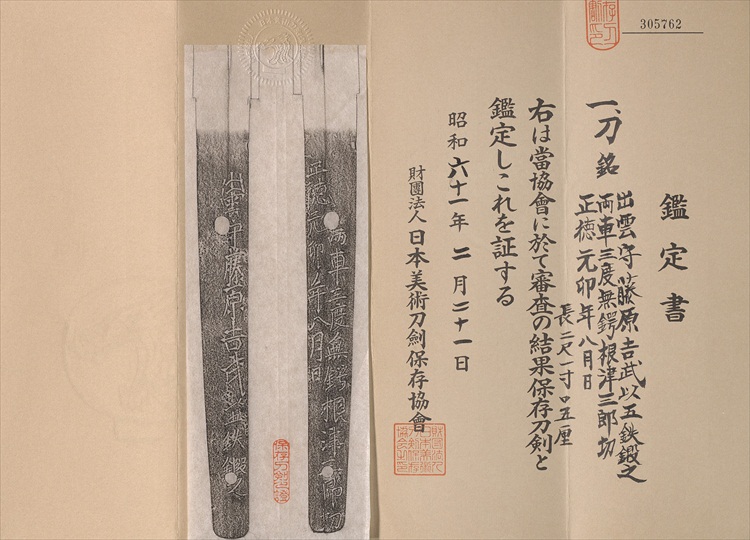
NBTHK Hozon paper translation
Izumo, (no) Kami, fujiwara, Yoshitake, motte, go, tettsu, kitae, kore (meaning he used 5 different irons)
Test information: Nezu Saburo (tester), Rio-Kuruma, cut one body through the hip area
Dated: Sho-toku 1st year 1711 , 8th month
![]()
This is the most common region cut for multiple body cutting tests.
This shows example how two bodies were stacked before the cutting test - a third body would be added in the same manner.
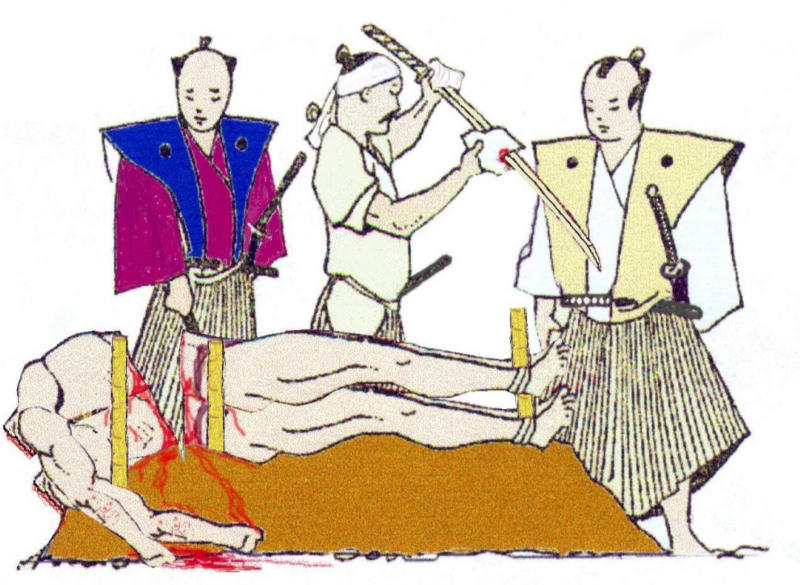
And the above image depicts the result.

The practice of performing cutting tests on swords was begun in the KOTO period, (prior to 1600), the tests were performed on various combinations of materials, i.e. bundles of bamboo laden with mud and tied, helmets, horn, iron of various degrees of hardness, and last but not least, the human body.


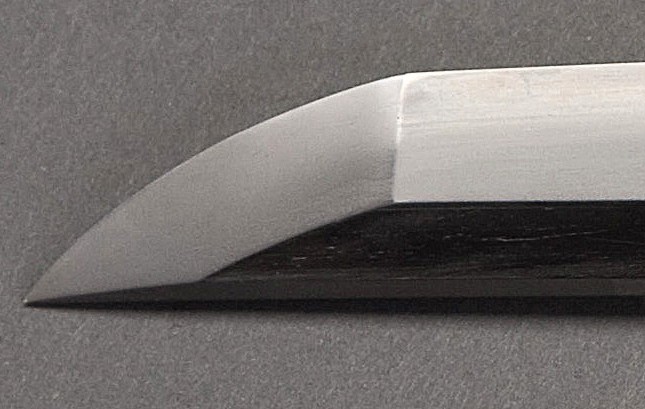
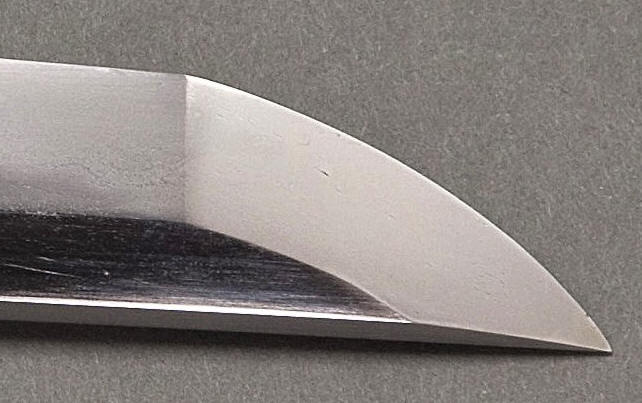
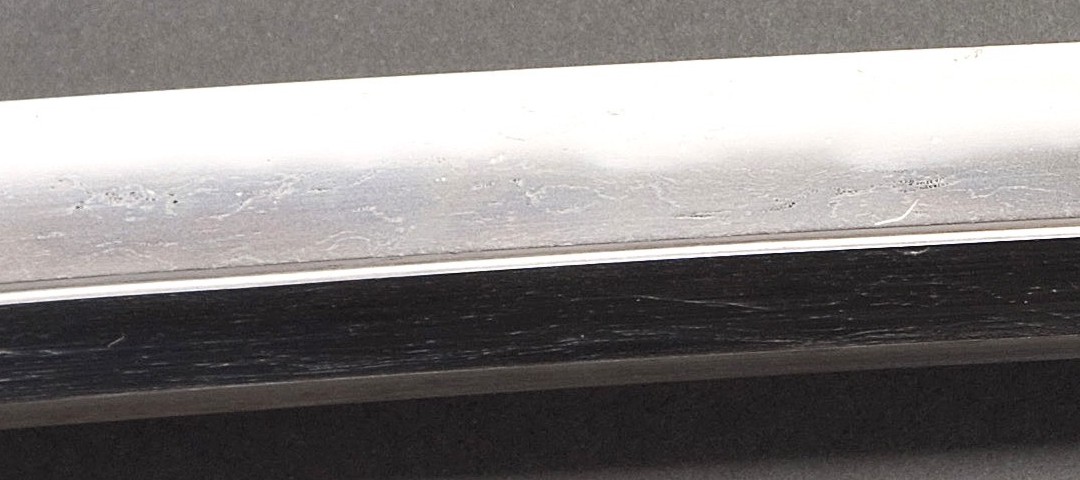
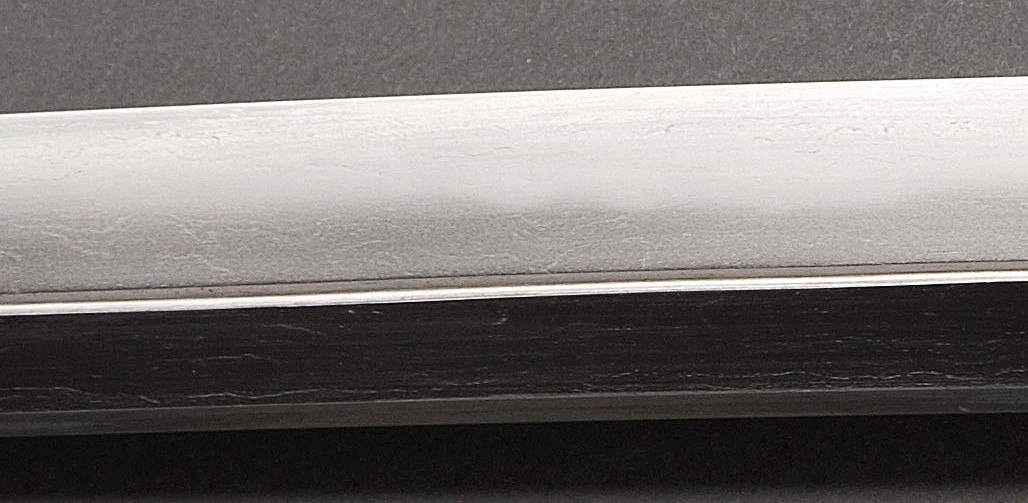


You may also view our CUTTING TEST BLADES SOLD IN THE PAST by clicking here
This Sword is not available for purchase.
If you wish to purchase a Japanese Sword please view our Nihon To for sale page or contact us directly via email, please include specifics of what you seek, i.e.: Katana, maker, era, price range etc.
Contact Matt: at 1(815) 465-6623, Tim: at 1(608) 315-0083 any time.
![]()
Pictures and content may not be copied without the express permission of samuraisword.com © 2013